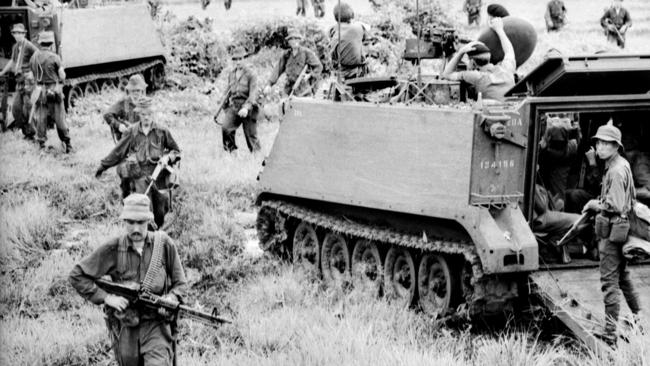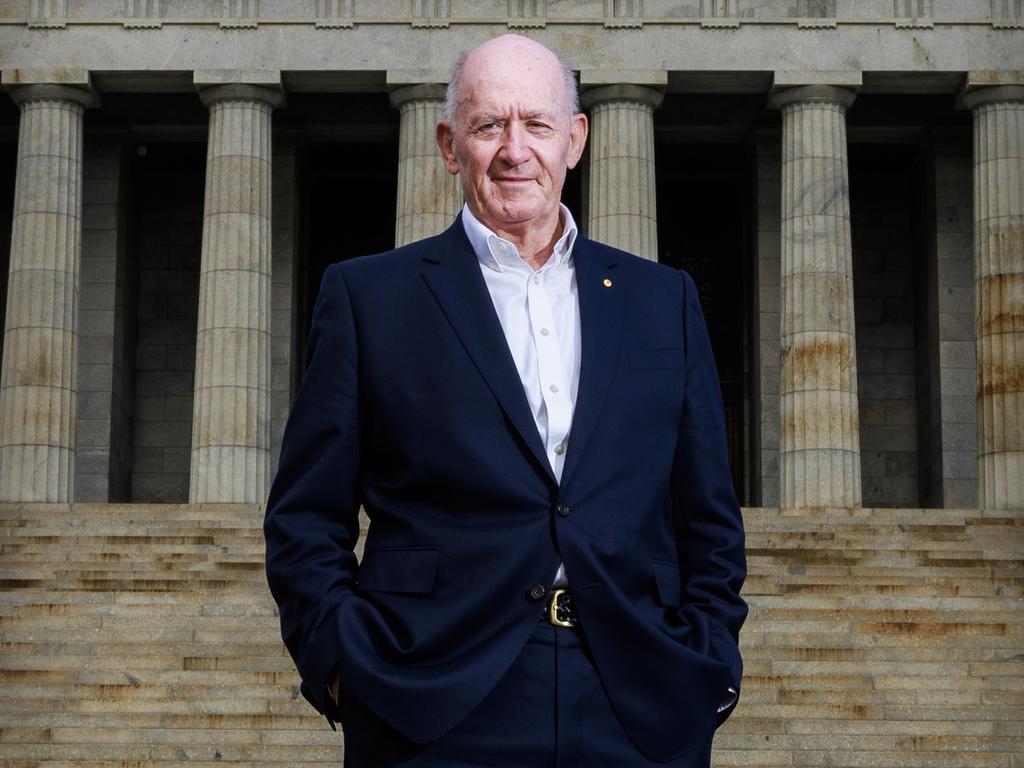Appropriate time to debunk myths of Vietnam War
So much misinformation is still propagated about Australia’s most controversial military engagement. Most of it on the ABC.

Yet, there was no on-air correction on Thursday when the ABC TV News Breakfast program reported on the lead-up to what co-presenter Michael Rowland referred to as the “national commemorative service marking the 50th anniversary of Australia pulling out of the (Vietnam) war”. The event took place on Friday – the anniversary of the 1966 Battle of Long Tan, in which Australian forces defeated some 2000 North Vietnamese and Vietcong troops.
Rowland’s comment appears to be a continuation of the myth that it was the Labor Party that withdrew Australian military forces from Vietnam following Gough Whitlam becoming prime minister after the 1972 election.
In fact, Australia’s commitment in defence of (then) South Vietnam was ended by Coalition PM William McMahon in late 1972. The combat forces had initially been committed in June 1965 by PM Robert Menzies.
From 1962, the Australian Army Training Team Vietnam advised the South Vietnam forces. In late December 1972, the remaining advisers were withdrawn by the Whitlam government.
On Thursday, News Breakfast focused on the report that the Australian War Memorial is updating its official history to record how many Indigenous Australians served in the conflict.
Early on in the report, James Vyver had this to say: “Before the 1967 referendum, Aboriginal men were still counted as flora and fauna and therefore exempt from conscription.” This is complete misinformation/disinformation.
To find Vyver’s error, it is not necessary to look beyond the ABC’s very own fact-check post. As long ago as March 2018, Sushi Das wrote: “Aboriginal people in Australia have never been covered by a flora and fauna Act, either under federal or state law.”
The situation with respect to national service (which came into operation in January 1965) is well explained in the official history of Australia’s Southeast Asian conflicts. In A Nation at War, Peter Edwards records that Aborigines “were not required to register for national service”.
The relevant commonwealth department was of the view that it would be impossible to trace and oblige young Aboriginal men to register for national service since many did not know their birthdates. National service affected men born in 1945 (on certain dates determined by a ballot) and after – until the scheme was abolished at the end of 1972. Not all states kept birth records of Indigenous Australians and, as Edwards points out, each state “defined Aboriginality differently”.
As Rowland acknowledged when introducing the segment, Indigenous Australians could volunteer for national service from 1965. It’s just that there was no intention to conscript them for a two-year stint.
Vyver reported that the AWM is updating the official record “to recognise Indigenous veterans discriminated against before and after (their) Vietnam service”. However, it is unlikely any Australian male would have regarded exemption from conscription as a form of discrimination – irrespective of his heritage.
This fake history is but the latest of myths surrounding Australia’s military involvement in Vietnam. Here are a few more:
• Myth: The Menzies government committed forces to South Vietnam in June 1965 in order to do the bidding of the US and its Democratic Party president, Lyndon B. Johnson. In fact, the Coalition was of the view that if Australia supported the US in Vietnam, the US was more likely to come to Australia’s aid if it was involved in any conflict with Indonesia – then led by its avowedly nationalist president Sukarno. In other words, the decision was made in what was perceived to be in Australia’s interest.
• Myth: All of those opposed to Australia’s involvement in the war sought peace. Not so. Many of the so-called anti-war activists wanted Ho Chi Minh’s communist regime in Hanoi to prevail over the non-communist government in Saigon. The likes of Jim Cairns and Tom Uren, leaders of the Labor Party’s parliamentary Left, welcomed the victory of North Vietnam in 1975 and the coming to power of Pol Pot’s Khmer Rouge in Cambodia at the same time.
• Myth: After the fall of Saigon on April 30, 1975, Australia welcomed refugees from South Vietnam. Nonsense. Throughout the remainder of Whitlam’s term as PM, he was hostile to anti-communist refugees since he did not want to upset the communist regime that now ruled Vietnam. According to his colleague, Clyde Cameron, Whitlam told the Labor cabinet he did not want what he termed “f..king Vietnamese Balts” coming to Australia. Whitlam never denied this – as my correspondence with him in late 2002 and early 2003 attests. It is published in the March 2003 issue of The Sydney Institute Quarterly.
• Myth: Vietnamese refugees who arrived in Australia in the second half of the 1970s came as boat people. Very few did. Most – like the young Dai Le (independent MP for Fowler) – fled by boat to Hong Kong, Thailand, Malaysia, Singapore and the like. They were assessed by Australian officials before entering Australia on Qantas planes with valid passports.
• Myth: Australians fought and died in Vietnam in vain. As Edwards acknowledges in his official history, the US-led commitment in Vietnam delayed a communist victory by a decade. Former Singapore leader Lee Kuan Yew pointed out that the time delay meant the non-communist nations of Southeast Asia were better able to withstand communist insurgencies in the mid-1970s than if they had taken place earlier.
The current commemorations, presided over by the Albanese government, provide an opportunity to debunk ahistorical myths about Australia’s most controversial military engagement.
Gerard Henderson is executive director of the Sydney Institute. For his Media Watch Dog blog go to www.theaustralian.com.au






Among Australia’s media outlets, it’s the ABC that appears to take the most prominent role in campaigning against what is termed misinformation or disinformation. On the ABC TV Insiders program last Sunday, for example, presenter David Speers saw fit to correct the (alleged) misinformation of his interview guest – Nationals leader David Littleproud. A somewhat unprofessional intervention by an interviewer, but this is the (media) world in which we live.